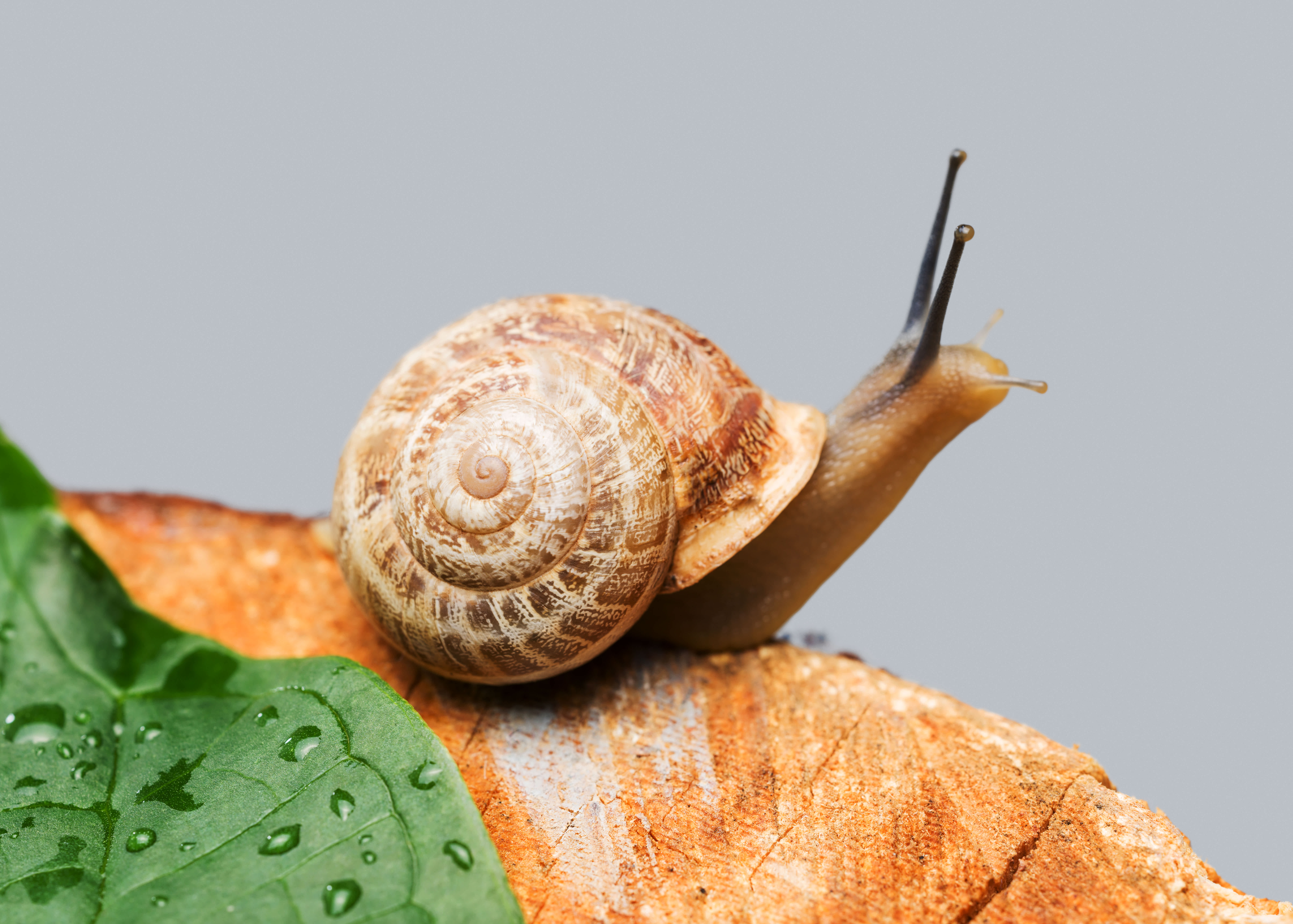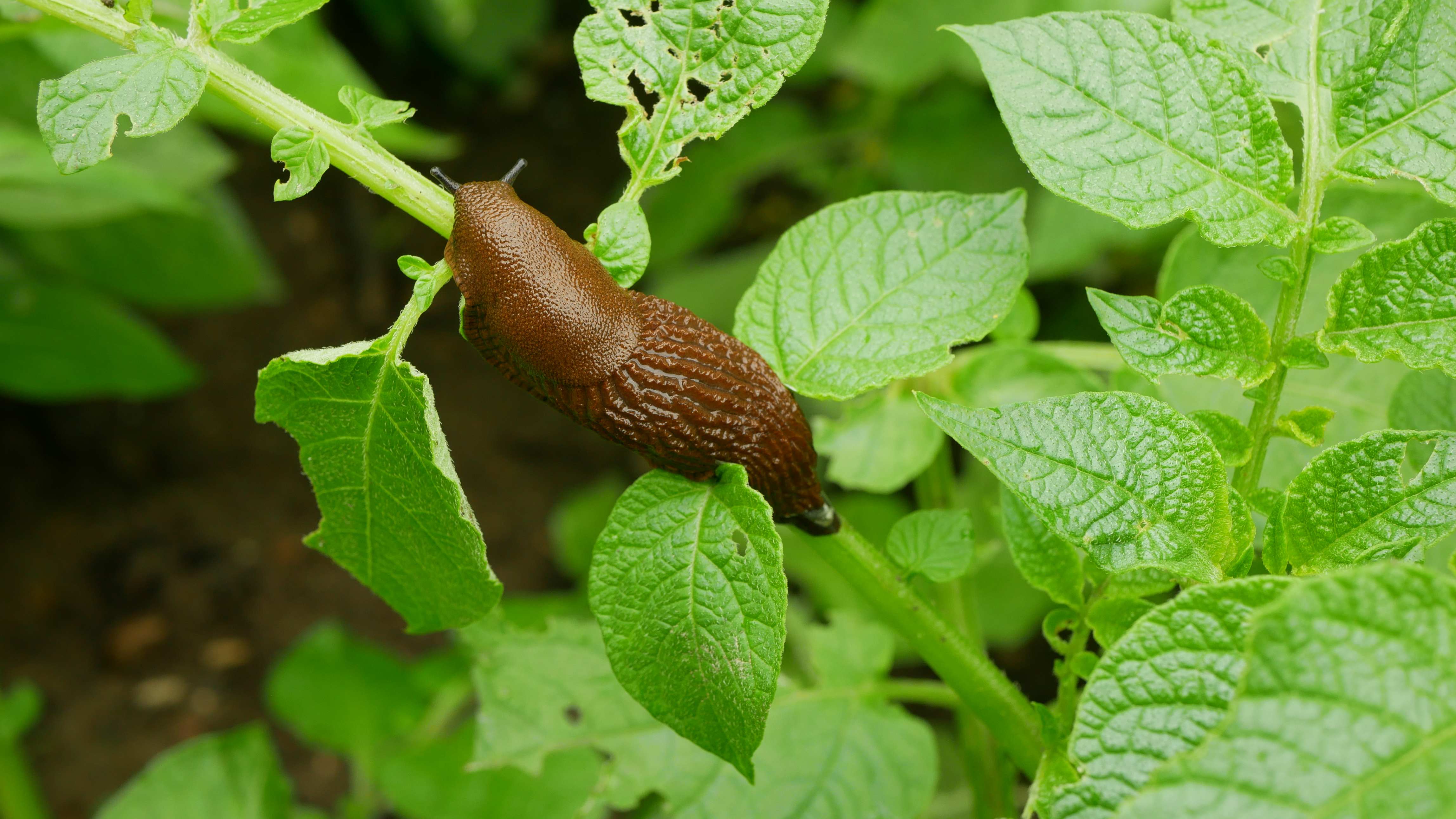
If you need to get rid of bugs and pests making your home unsafe, it's time to decide if fumigation is necessary. Learn more about average fumigation costs.
Both snails and slugs leave behind a trail, but their journeys are different


Snails have a shell while slugs do not.
Slugs stick to one environment while snails are more adaptive to many types of environments.
Snails eat only plants, while slugs also feast on insects.
While they often get grouped together, snails and slugs have clear differences that can make it easy to tell them apart. Snails carry a shell that offers protection and allows them to tolerate a wider range of conditions, whereas slugs rely on moisture and shelter to survive. Let’s dig into how snails and slugs live, eat, and interact with their environment to showcase the key distinctions between these two similar creatures.
It’s easy to confuse snails and slugs. However, their main differences can help you determine which type of bug is harming your garden bed before you call an exterminator.
| Type of Difference | Snails | Slugs |
|---|---|---|
| Size | ¼–2 inches | 1–6 inches |
| Color | Brown, tan, cream | Gray, brown, orange |
| Diet | Plants, organic Matter | Plants, insects |
| Habitat | Outdoors | Dark, moist areas |
| Disease | Can carry disease | Can carry disease |

These slithering, slimy bugs have as much in common as they do differences, especially when it comes to their appearance.
The presence of a shell makes most snails appear larger than slugs. The average snail measures about ¼ to 2 inches long, with some rarer species growing up to 8 inches long. Slugs have a slimmer appearance but can stretch longer when moving, measuring anywhere from 1 to 6 inches long.
Both lawn bugs come in a range of colors, with snails veering closer to earth tones and slugs varying more in shades of gray, brown, and tan to orange, yellow, or black. Their coloration depends on their environment, as it’s used as a tool to help them blend in and avoid predators.
Snails have a round, coiled shell on their backs, which makes them appear rounder and more bulbous than slugs. Since slugs lack a shell, their shape is more elongated and smooth to help them remain flexible as they stretch and squeeze in tight spaces to protect themselves.
Although they’re both gastropods, snails and slugs differ in their diets. Land snails are mostly herbivores, feasting on leaves, stems, fruit, and decaying plant matter. Slugs, however, eat everything snails do and more. They also enjoy fungi, lichen, and other small invertebrates if the opportunity to prey arises.
You’re most likely to spot land snails around your home, but they can also be found near wetlands, deserts, and oceanic regions. Their outer shell acts as a protective device that allows them to tolerate drier conditions and more exposed spots.
Slugs, on the other hand, are less adaptable and are more vulnerable to drying out if they don’t stay near wet, dark spaces. They like to hang out under rocks, leaves, logs, or in dense vegetation.
At a glance, snails and slugs have similar lifecycles, though they have slight variations due to shells (or lack thereof) and habitats. Both have male and female reproductive organs and lay eggs in moist soil or sheltered areas. Snail eggs are often deposited in protected spots where the shell can offer early protection and the hatchlings emerge already carrying their tiny shells. Slug eggs, in contrast, are laid in damp, hidden locations without that initial shield, making them more vulnerable in early life.
Both snails and slugs can carry diseases, but the risks and types differ slightly. Snails, especially freshwater species, can host parasites like schistosomes, which cause schistosomiasis in humans in certain regions. Land snails can also carry bacteria such as salmonella.
Because their lack of shell leaves them more exposed, slugs often carry similar bacteria and are notable carriers of the rat lungworm parasite, which can infect humans if ingested accidentally on contaminated produce. Both pose a risk mainly through accidental consumption or contamination, but slugs’ reliance on damp environments can make them more frequent visitors to gardens.
To keep snails and slugs at bay, you’ll need to make the space as uninviting as possible. This means controlling moisture and putting barriers in place to keep infestation from ruining the fruits of your labor.
Since they’re nocturnal, watering your plants or garden in the morning helps keep soil drier at night when the insects are more active. You can also apply a natural insecticide, such as diatomaceous earth, which damages the outer shells of snails to help manage infestation. If you want to go the more humane route, you can install barriers over your plants or garden areas to make it difficult for snails to cross.
Slug prevention takes a similar approach to snail control but with more moisture control, since slugs are even more dependent on damp, shady spots. Clearing away garden debris, mulch piles, or dense weeds can reduce the cool hiding places slugs favor during the day. Like with snails, watering early in the day instead of the evening helps keep soil less inviting at night. Barriers such as copper strips, rough mulch, or diatomaceous earth around beds or containers can also slow them down, but if your efforts prove ineffective, it may be time to contact your local exterminator.
From average costs to expert advice, get all the answers you need to get your job done.

If you need to get rid of bugs and pests making your home unsafe, it's time to decide if fumigation is necessary. Learn more about average fumigation costs.

If you have a serious rodent problem, you may need to know the cost of hiring a rat exterminator. We can help you estimate prices and control costs.

Whether you have bugs, bats, or rodents invading your home, you’ll want to contact an exterminator quickly. Find out how much pest control costs.

Learn how to check for bed bugs in your home, what to do if you find them, and how to prevent them from returning in this handy DIY guide.

Pest inspection costs depend on the type of inspection, location, and other factors. Learn more about how much pest inspections cost with this guide.

How does roach spray work? Learn more about the types of cockroach spray, how they stop roaches, and how well they do it.